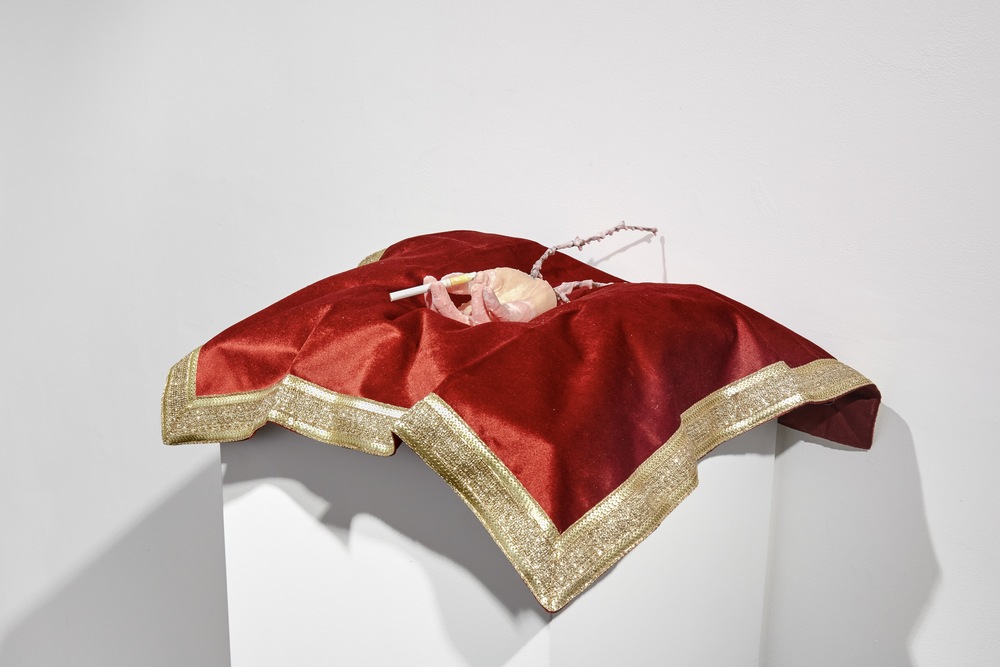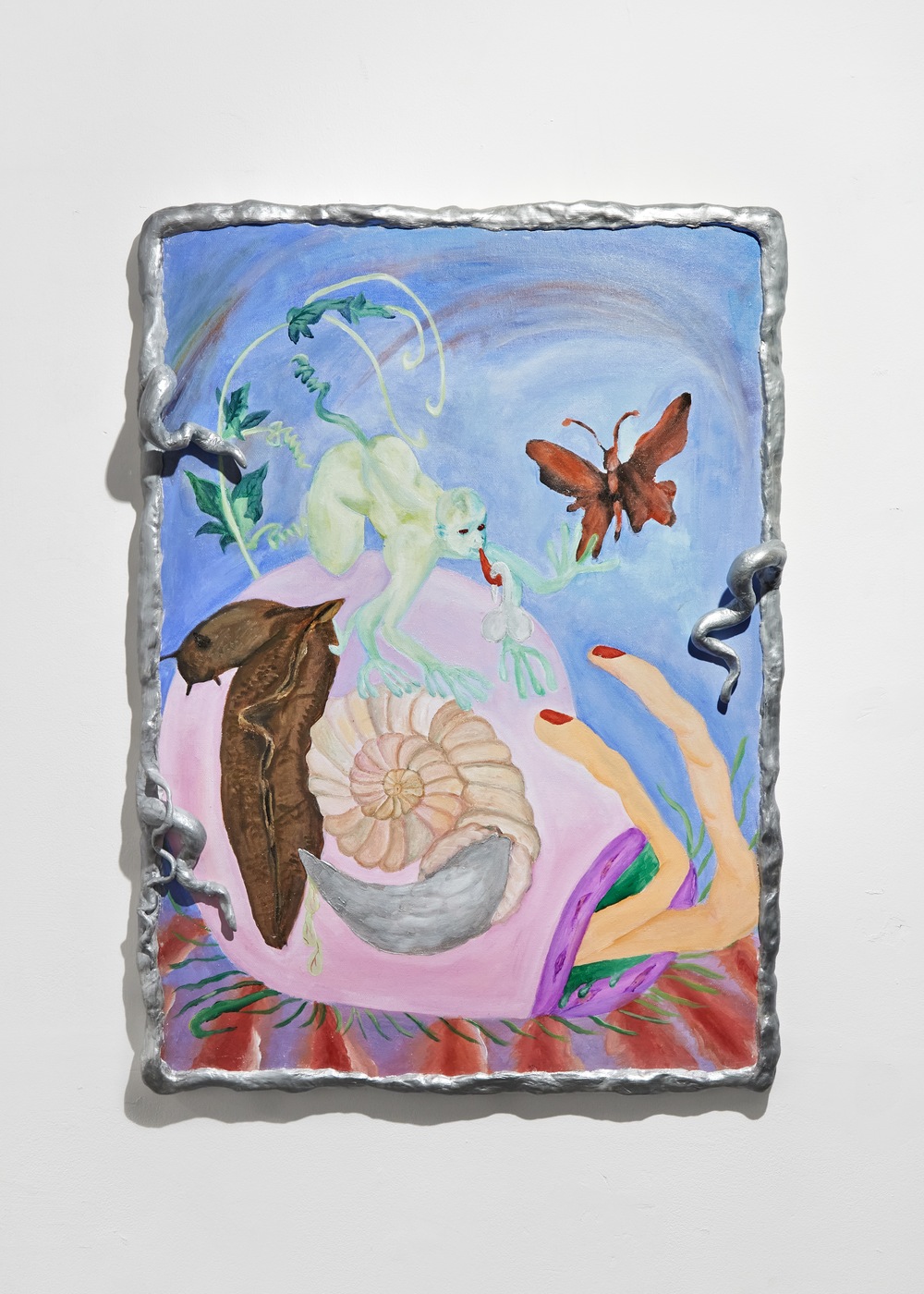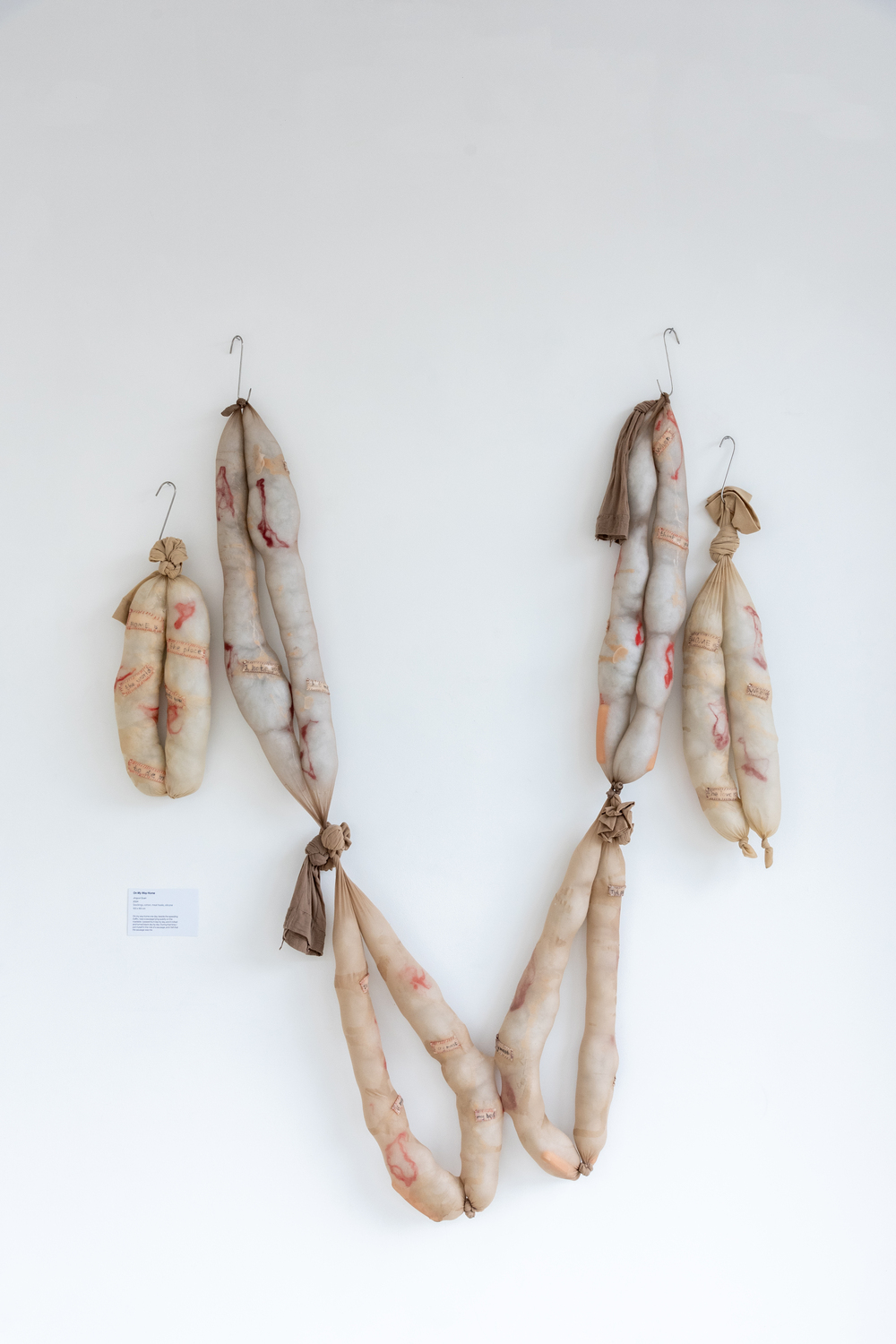Jingyun Guan
Critical Review: Jingyun Guan – Between Softness and Sharpness
by Anna Gvozdeva
Jingyun Guan’s practice unfolds within the intersections of personal mythology, feminist discourse, and queer identity. A London-based Chinese artist trained at the University of the Arts London, they create a distinct visual and material language that explores fragility and resilience, the body and memory, the private and the public. Their multidisciplinary approach – encompassing painting, performance, and installation – becomes a means of reflecting on belonging and self-discovery in both intimate and critical ways.
Material as Language
At the core of Guan’s practice lies a sensitivity to materials and their contradictory qualities. The dialogue between softness and sharpness is not only formal but deeply conceptual. It embodies the experience of existing within and against systems of gender, culture, and emotion. By working with wax, tights, cotton wool, and silicone – materials often associated with domesticity or femininity – they transform the language of the everyday into a meditation on vulnerability and strength.
These tactile substances evoke skin, wounds, and scars, but also healing and regeneration. In On My Way Home, the use of flesh-colored stockings and stitched text turns banal materials into carriers of memory and pain. The translucent fabric suggests human skin, while the exposed stitches visualize the emotional labor of repair.
 Jingyun Guan | Growing a new hand from the nerves
Jingyun Guan | Growing a new hand from the nerves
The Body as a Site of Transformation
In Growing a New Hand from the Nerves, wax becomes both a material and a metaphor. Guan casts their own hand, dissolving the boundary between self and sculpture. Wax, simultaneously pliable and fragile, reflects the dual nature of the body as both vulnerable and powerful. Its flesh-like color recalls skin after trauma, producing a visceral sense of renewal and metamorphosis.
Their feminist sensibility merges with surrealism here, as the fragmented body becomes a site of creation and resilience. This idea continues in Date With The Snail, a painting that presents biomorphic, dreamlike imagery – a pale amphibian creature, a butterfly, a spiraling shell – composed in an ethereal pastel space. Drawing on Zhuangzi’s “Dream of the Butterfly,” Guan reflects on the blurred boundary between reality and illusion. The snail’s mucus emerges as a metaphor for adaptability and survival. Soft, fluid tones contrast with the underlying philosophical depth, transforming the composition into a meditation on transformation and perception.
 Jingyun Guan | Date With The Snail
Jingyun Guan | Date With The Snail
Embodied Emotion
The installation On My Way Home is one of Guan’s most personal works. It reads as a poetic reflection on solitude, displacement, and the search for home. The flesh-like stockings filled with cotton and silicone, hanging from metal hooks, evoke a mix of domestic familiarity and unease. Stitched phrases such as “Home is the place the world wants you to die in” turn language into wounds. The piece carries both feminist and autobiographical weight: the forms recall scars on the artist’s mother’s body, while their collective shape resembles a uterus. Here, “home” becomes a metaphorical body – ambivalent, wounded, and alive.
The installation moves between the grotesque and the sacred, mirroring Guan’s ongoing negotiation of belonging in a diasporic and gendered context.
 Jingyun Guan | On My Way Home
Jingyun Guan | On My Way Home
Personal Mythology and Shared Experience
What distinguishes Guan’s practice is their ability to weave deeply personal narratives into a broader emotional and philosophical framework. Their works are autobiographical yet open-ended, inviting viewers to engage with their own experiences of vulnerability, transformation, and memory. The childlike visual language – bright colors, simple forms, tactile textures – creates a disarming surface through which complex emotions emerge.
In combining surreal imagery with physical immediacy, Guan creates spaces where introspection and empathy intersect. The viewer is drawn not only to observe but to sense the work’s emotional and material pulse.
Conclusion
Jingyun Guan’s art reveals the strength hidden within fragility. Their work suggests that tenderness can be a form of resistance and that the process of healing is itself an act of creation. Moving fluidly between painting and sculpture, between dream and body, they construct a world where memory, desire, and trauma coexist.
Their visual language is poetic, unsettling, and deeply corporeal. It invites the viewer to look and to feel, to encounter the delicate balance between pain and renewal. Through the dialogue of softness and sharpness, Guan redefines strength as the capacity to bend, to heal, and to endure.

Leave a Reply